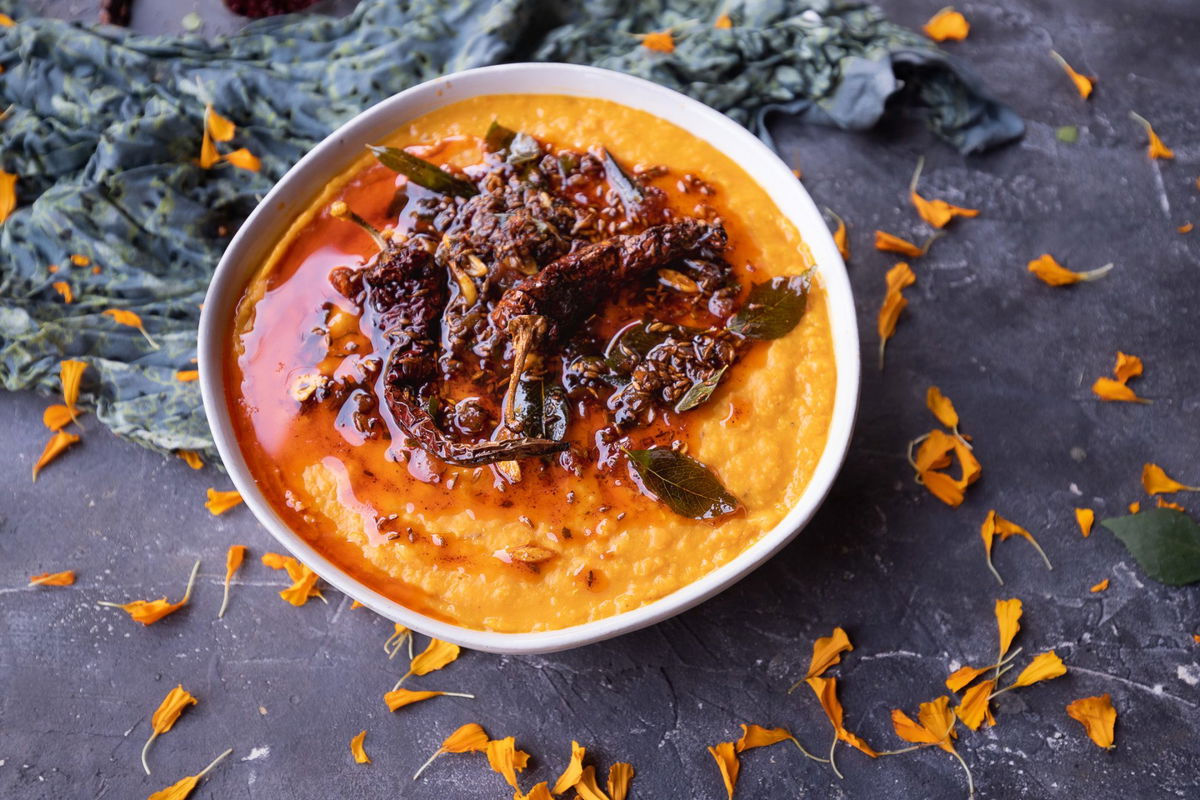Today, sprouts have become a popular health food crowd because sprouting the beans helps brings out the nutrients in the bean and helps with digestion. Sprouting beans is an ancient method and a tradition that has been passed down to me by my mother. For her, it was a nightly ritual when we lived in India.
About Bean Sprouts
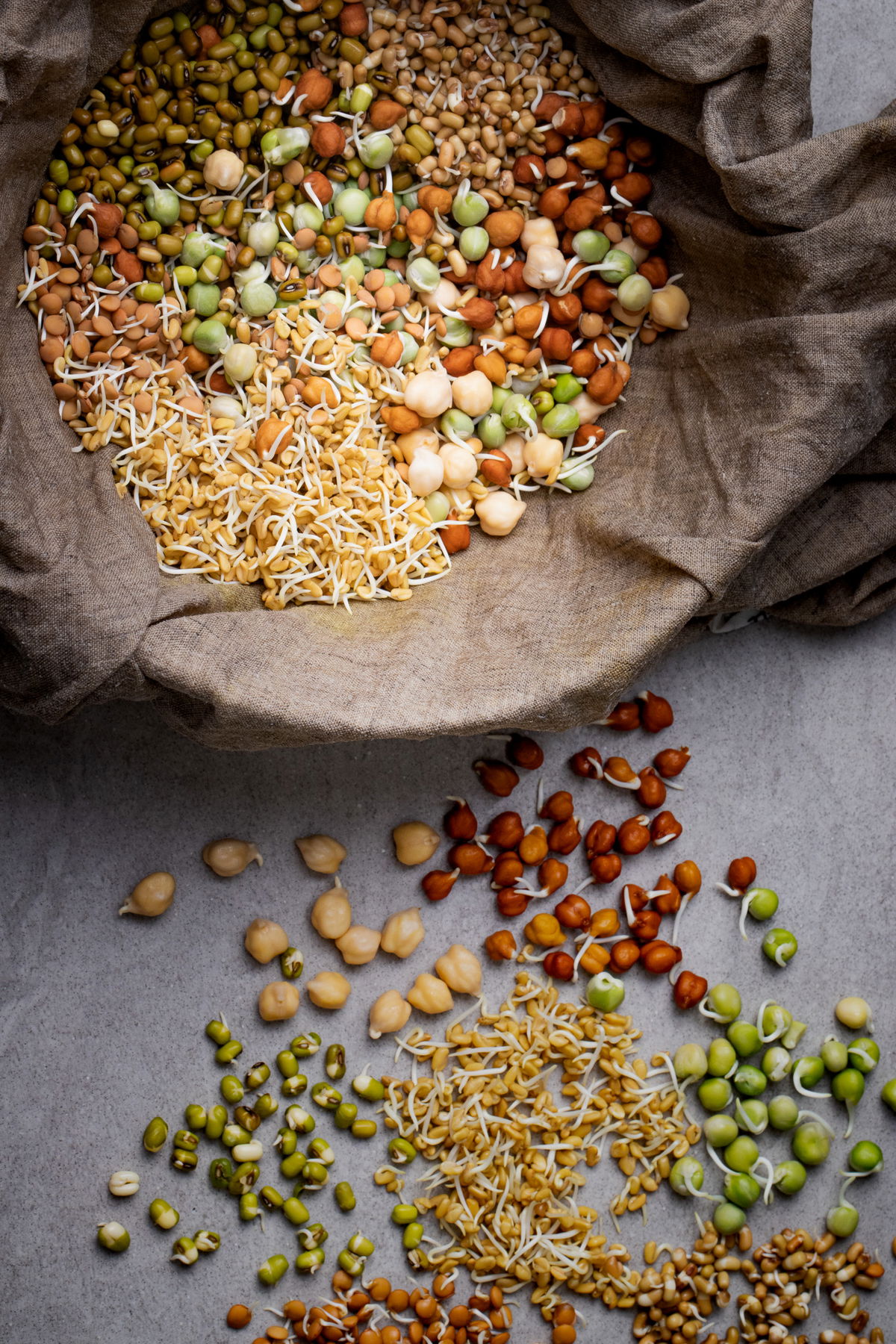
You can sprout lentils and many beans, such as brown garbanzo beans. It’s one way to get them soft enough to eat without lugging out the pressure cooker. Sprouting beans makes them soft enough to eat without cooking, though I often cook them in a saute or usal.
Before you eat sprouted beans raw you should make sure they are safe. A few varieties of beans contain toxins, called lectins, when eaten raw, such as kidney beans, fava beans, and pinto beans. Sprouting these beans do not get rid of the lectins, only cooking them will.
What Can You Sprout
There are many beans you can sprout. I have sprouted: moong, masoor, green peas, Kabuli chana (chickpeas) and black chana, and fenugreek.
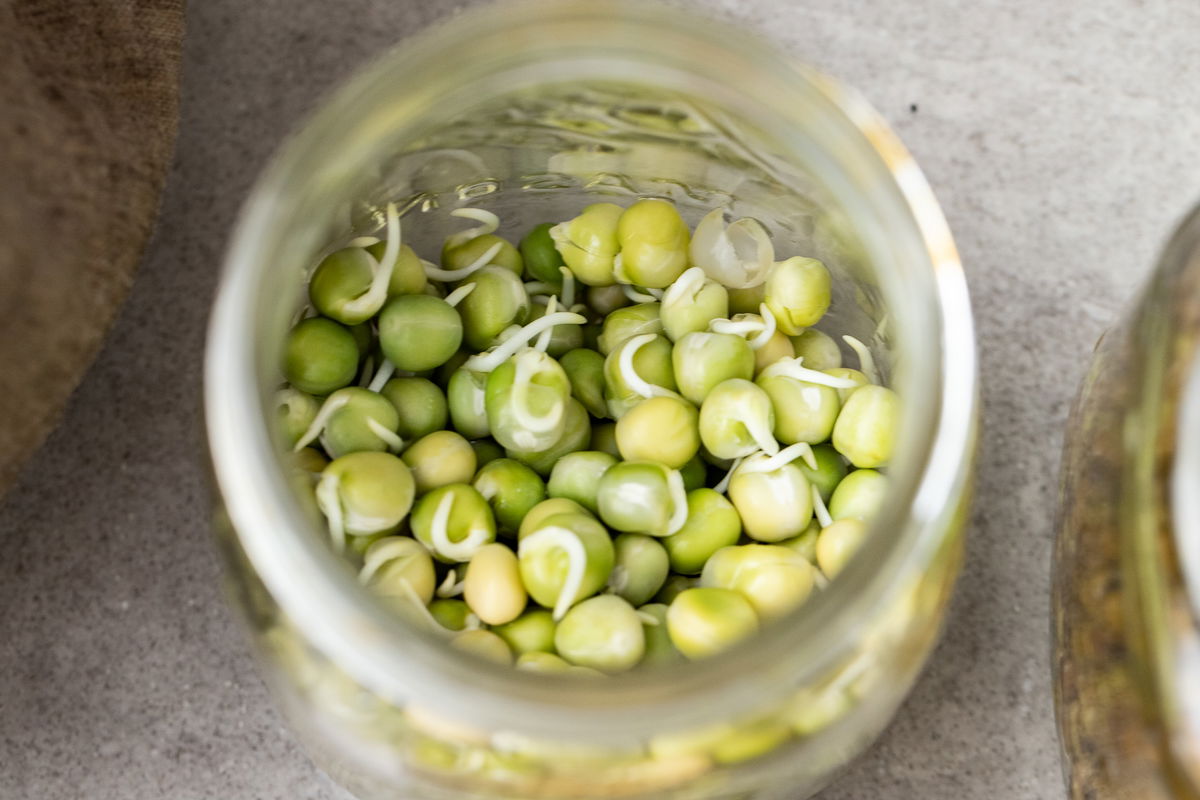
Sprouting Mung Beans
Mung bean sprouts are the same sprouts you find in many Chinese and Thai dishes. They are also popular to sprout in India, but we don’t allow them to grow as much. Indian moong bean sprouts are are smaller, and the bean is left more intact. The result is almost a completely different food.
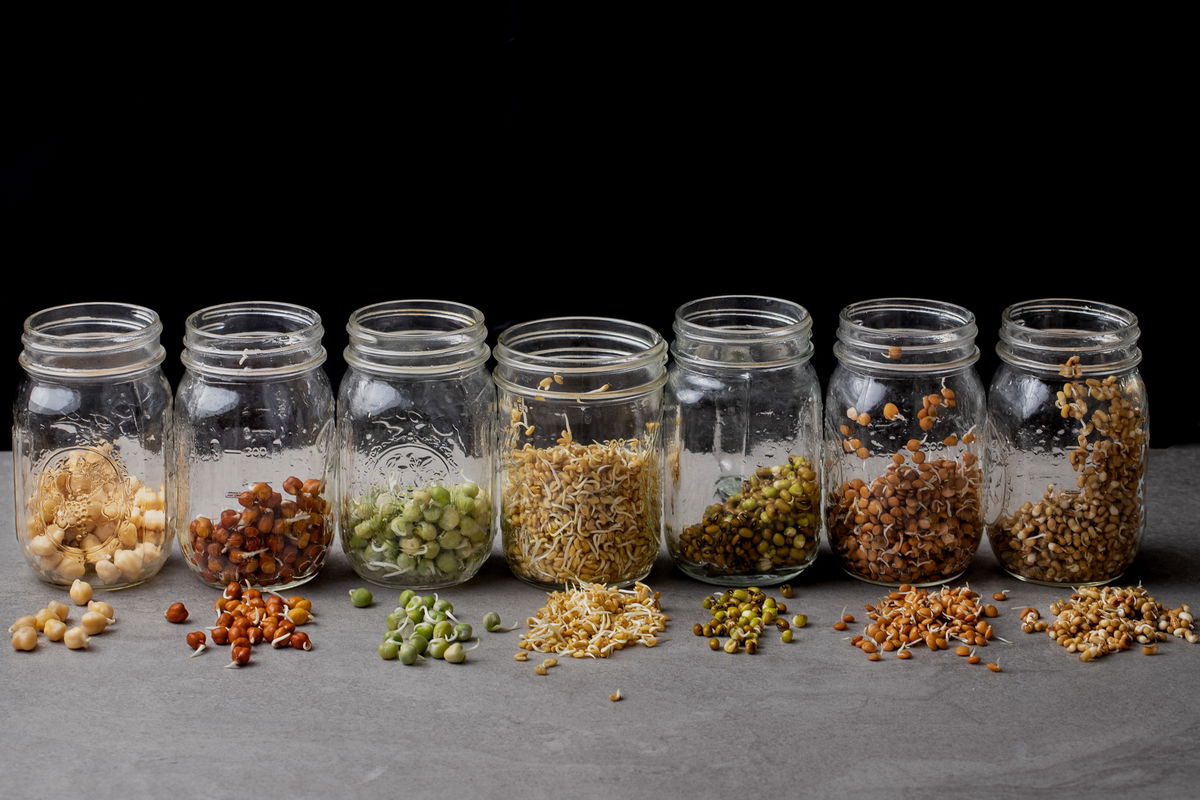
How to Sprout Beans
How to Beans (such as Moong Beans)
Mung bean sprouts are the same sprouts you find in many Chinese and Thai dishes, but we don't allow them to grow as much, so they are smaller, and the bean is left more intact.
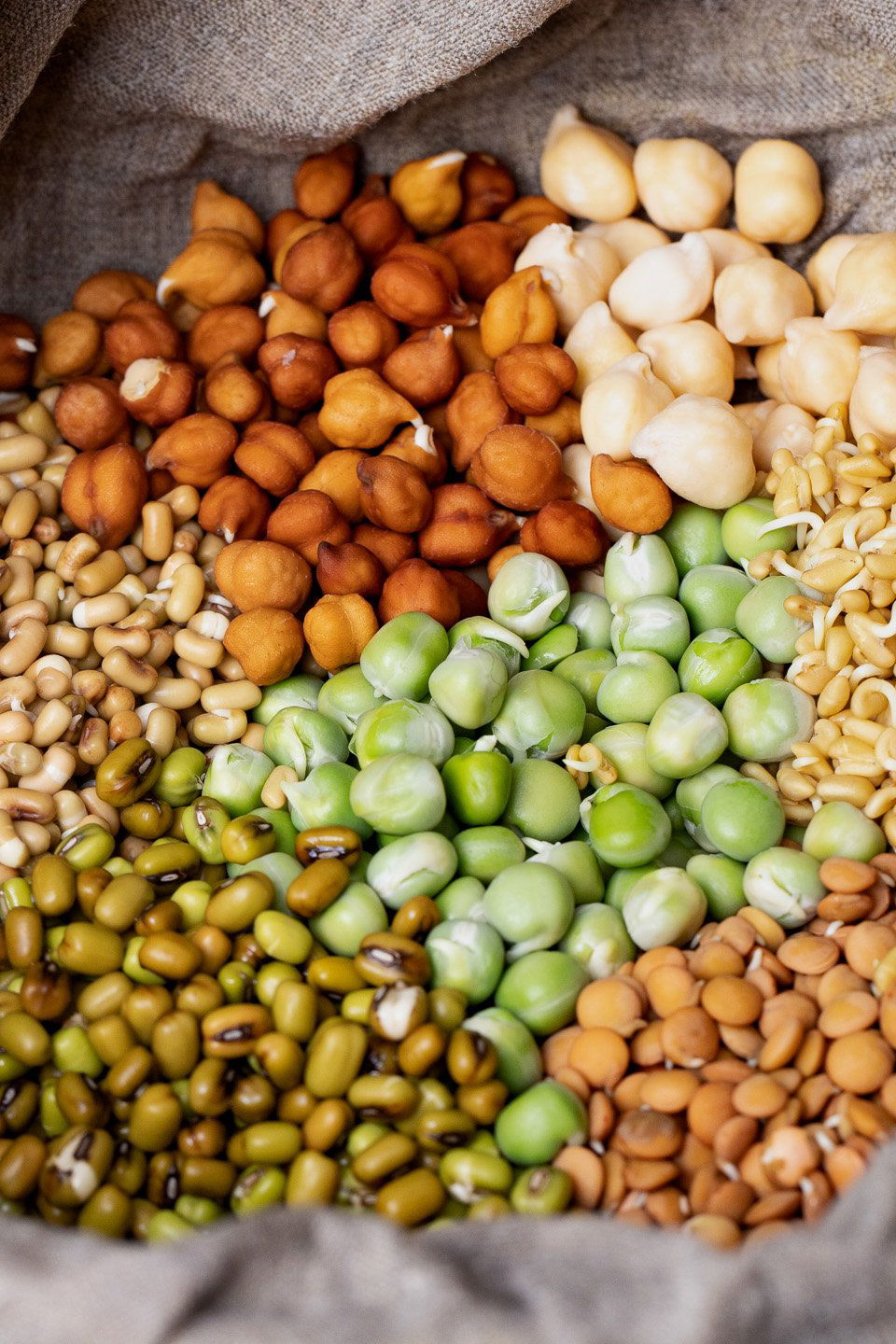
Ingredients
- 1 cup mung beans
- 2 or more cups water
Instructions
- Put the 1 cup of dry mung beans in a bowl, cover with at least 2 cups water, if not more. The beans will double in size, you do not want any to escape the water as they expand.
- Let soak for about 4 hours.
- Drain the water from the beans. Wrap them in a paper towel, or tea towel. There should be enough water left on the beans to dampen the paper towel, if not, you may dampen the towel a bit.
- Place in a colander in a bowl, cover with a dark towel or plate so they are not exposed to light. Allow them to sit overnight or for at least eight hours until they are sprouted to the extent that you like. You can let them keep growing, but if you wait too long they tend to mold.
Notes:
Another method is to sprout them in a jar. Instead of putting them in a colander, rinse them thoroughly and put them in a jar. Put a loose cover or damp towel over the top. Rinse the beans every 8-12 hours until they are sprouted.
Video
(Originally published May 26, 2013; updated Feb 19, 2023)
